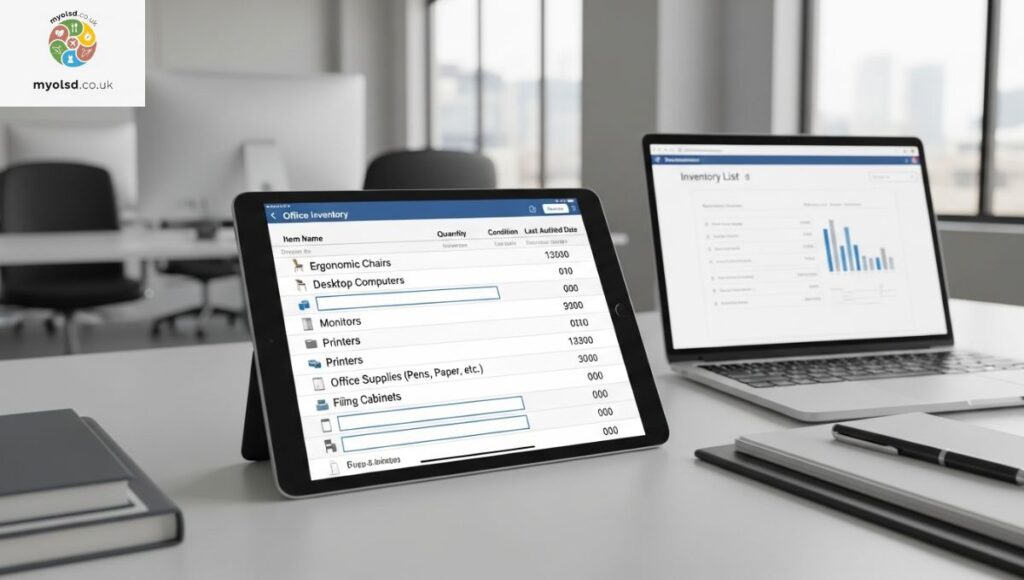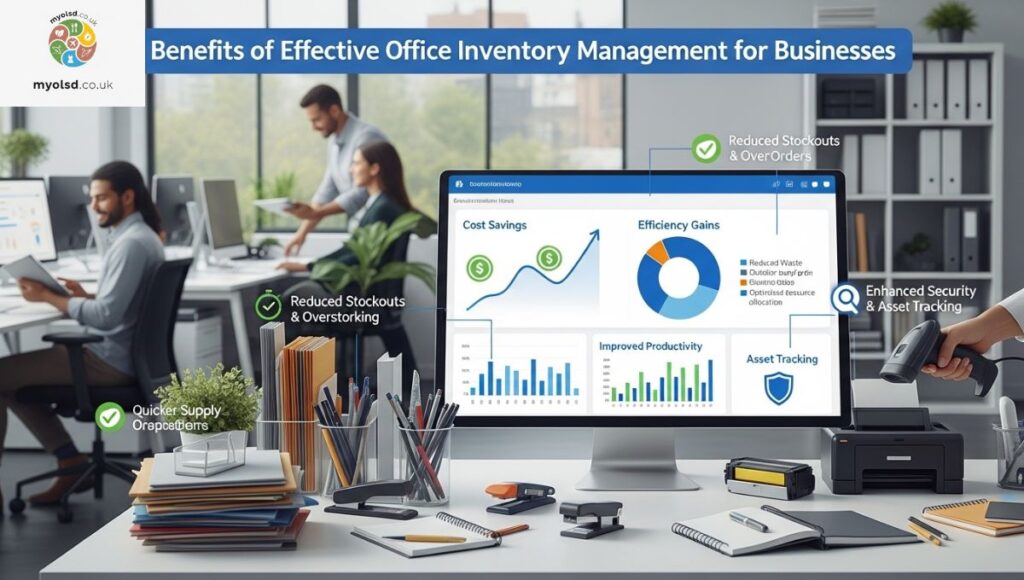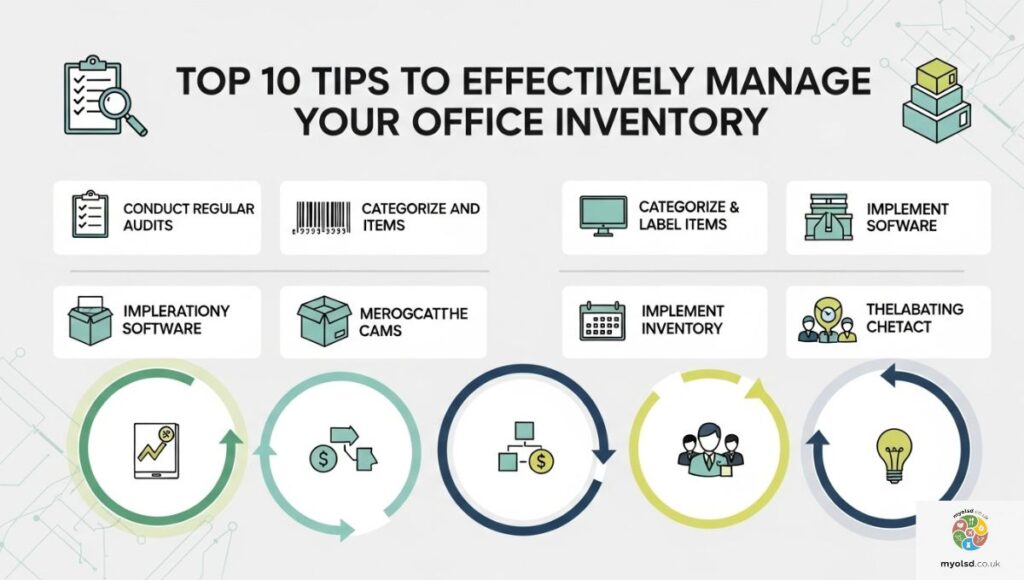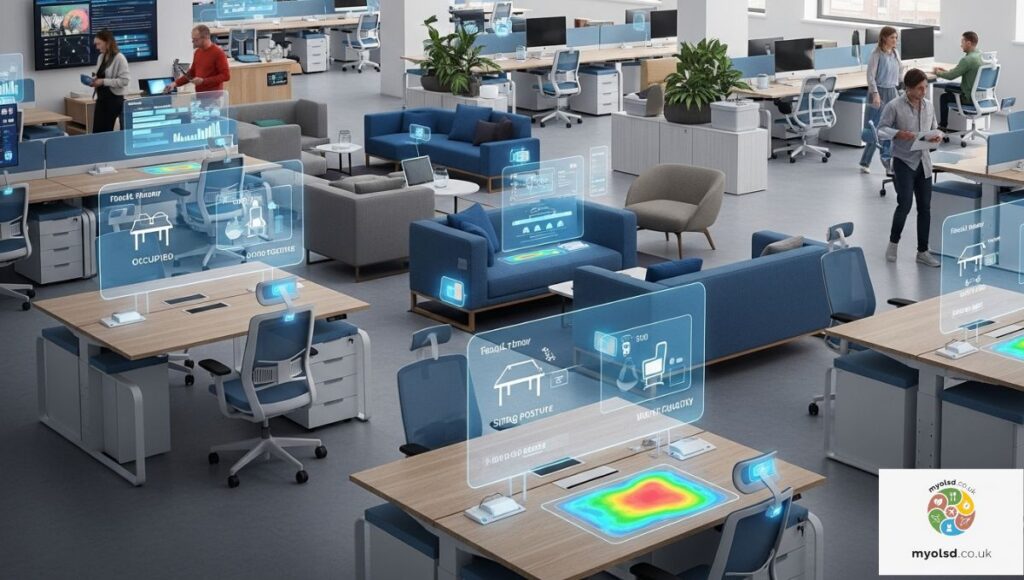Ever walked into a big office and wondered How do they even know where all the chairs, desks, and shelves are? You’re not alone. Keeping track of furniture in a huge workspace sounds almost impossible. Things get moved, borrowed, or even misplaced, and suddenly it feels like a scavenger hunt just to find one missing chair. That’s exactly why so many people search for how do big offices keep track of furniture, cause the struggle is real.
In this blog, we’ll break down the smart and practical ways offices actually manage it all. From asset tracking systems and tags to digital tools and clever organizing tricks, you’ll see how big companies stay in control without losing their minds. If you’ve ever been curious about how this works or are even looking for ideas for your own workplace, you’re in the right place.
What is Office Inventory?

Office inventory includes all the physical assets a workplace owns, ranging from daily supplies like pens and paper to larger items such as desks, conference tables, couches, and printers.
While many people think inventory just means consumables, furniture is one of the most overlooked categories.
Keeping an accurate record of furniture matters because it ties directly to cost savings, space management, and accountability. When you know exactly what you have, you avoid wasting money on unnecessary purchases and ensure your office remains functional, organized, and compliant with insurance requirements.
Types of Office Inventory
Not all offices keep track of the same kinds of inventory. Larger companies often categorize their assets into distinct groups to prevent confusion.
Raw Materials
Some offices, such as design studios or research facilities, store raw materials like wood, metal, or fabrics for upcoming projects.
MRO Inventory
MRO (Maintenance, Repair, and Operations) supplies include cleaning products, tools, and spare parts that keep the office running smoothly.
WIP Inventory
Work-in-progress (WIP) inventory applies to companies that build or assemble goods. For offices, this might mean partially assembled furniture awaiting installation.
Finished Goods
This category covers the bulk of workplace items: desks, chairs, filing cabinets, lounge furniture, and technology assets like printers and copiers.
Read more Article:How Much Does a Highland Cow Cost?
Benefits of Effective Office Inventory Management for Businesses

When offices take inventory seriously, they unlock multiple benefits. First, it reduces waste by preventing duplicate purchases. Second, it helps managers quickly locate items, saving time. Finally, it improves workplace safety and supports audits, which are crucial for compliance and insurance claims.
In other words, knowing where every chair, desk, and filing cabinet sits isn’t just about neatness; it’s about money, efficiency, and peace of mind.
1. Cost Savings
Furniture is expensive, and losing track of it can drain budgets quickly. Imagine replacing ten missing office chairs only to discover later they were stored in a rarely used meeting room. A well-maintained furniture inventory prevents overspending and ensures assets are used to their fullest.
2. Enhanced Efficiency
When employees know where to find what they need, productivity soars. Instead of wasting time searching for an extra desk or waiting for a new filing cabinet, staff can access what’s already available. Organized inventory systems allow administrators to fulfill requests faster and keep operations flowing smoothly.
3. Data-Driven Decisions
Tracking furniture provides useful insights. For example, usage data might reveal that guest seating is underutilized while conference tables are in constant demand. With these patterns, managers can make smarter investments, adjust office layouts, or even downsize unnecessary assets.
4. Regulatory Compliance
Large organizations must often comply with workplace safety and insurance requirements. Furniture records ensure proof of ownership, condition, and value during audits or after natural disasters. This level of accountability also helps with warranty claims, depreciation tracking, and compliance with corporate financial reporting.
Top 10 Tips to Effectively Manage Your Office Inventory

Now let’s get practical. Here are ten proven strategies offices use to keep track of furniture and supplies.
1. Choose an Inventory Tracking Method
The first step is deciding how you’ll track assets. Small businesses may use spreadsheets, while large offices often adopt digital solutions such as asset tracking software. These platforms provide real-time updates, reduce errors, and make audits far easier.
2. Label Inventory Supplies
Barcodes, QR codes, or RFID chips make it easy to scan and update records. Each item gets a unique tag with details like purchase cost, acquisition date, and current location. This eliminates confusion when relocating furniture between departments.
3. Group Inventory Items
Organize furniture by category: desks, chairs, storage units, and lounge seating. This helps simplify counting, monitoring, and moving items. A filing cabinet shouldn’t get lost among kitchen appliances; categorization keeps everything neat.
4. Monitor Stock Levels
While furniture isn’t replenished as often as pens or paper, tracking quantities still matters. Offices may suddenly need dozens of chairs for a training event, and knowing your stock levels helps avoid last-minute purchases.
5. Define Reorder Points
For consumables like janitorial supplies, reorder points prevent shortages. For furniture, set replacement triggers based on condition or usage cycles. For example, swivel chairs might need replacing every five years.
6. Establish Accountability
Assign responsibility to an inventory manager or office administrator. When employees ask for new items, the manager updates the inventory records. This ensures the system stays accurate instead of becoming another forgotten spreadsheet.
7. Track Inventory Usage
Usage patterns reveal which furniture is in demand and which sits idle. If several tables are rarely used, they might be moved or sold. Tracking helps maximize utilization and reduce waste.
8. Perform Regular Inventory Audits
Quarterly or annual audits ensure records match reality. Cycle counting, checking small batches regularly, makes this process less overwhelming than a full-scale yearly audit.
9. Invest in Technology
Modern offices rely on cloud-based apps, mobile scanners, and even GPS tracking for high-value items. These tools sync data in real-time, making inventory management seamless even in hybrid workplaces.
10. Train Staff on Inventory Procedures
Even the most effective system won’t work if employees don’t follow it properly. Provide training on scanning items, logging requests, and reporting damages. A culture of accountability ensures furniture stays visible and traceable.
Smart Office Hacks: How Furniture Gets Monitored in Large Workplaces

Big organizations frequently design digital layouts of their office spaces. Each desk, chair, and filing cabinet is marked on a floor plan, making relocation simple. Some even use Bluetooth or WiFi positioning to pinpoint items. Think of it like a Google Maps for office furniture.
Tech Tools Helping Large Offices Track Furniture with Ease
Technology has changed the game. Tools include:
- Barcode scanners – Quick, cheap, and accurate
- RFID tags – Automate tracking with no manual scanning
- GPS tracking – For high-value or mobile assets
- Mobile apps – Allow updates from smartphones and tablets
- Cloud sync – Keeps everyone on the same page in real time
These tools boost accountability, reduce errors, and save money long-term.
From Barcodes to Apps: Simple Ways to Track Office Furniture
Consider this example: a company with 500 employees once lost track of dozens of office chairs. Instead of replacing them blindly, they introduced QR code tags. Employees could scan a chair’s code to see where it belonged. Within weeks, missing items reappeared, saving thousands in unnecessary purchases.
The Real Reason Large Offices Always Know Where Every Chair Belongs

It’s not magic, it’s accountability paired with the right tools. Just like a library tracks every book, offices track every piece of furniture. By combining labeling systems, digital records, and staff cooperation, they avoid losses, save money, and ensure smooth daily operations.
Conclusion
Managing office furniture in large workplaces doesn’t have to be chaotic. By implementing smart systems, leveraging technology, and promoting accountability, companies know exactly what they own and where it is.
Whether you’re using spreadsheets, barcodes, or advanced tracking apps, the key is consistency. Once you set up the right process, you’ll never wonder again how do big offices keep track of furniture, you’ll know.
FAQS
What is inventory in the workplace?
Inventory in the workplace is the collection of all supplies, equipment, and assets a company uses to operate.
What are the 4 types of office inventory?
The four types are raw materials, MRO supplies, work-in-progress, and finished goods.
What is the main purpose of inventory?
The main purpose of inventory is to ensure items are available when needed for smooth operations.
How do large offices keep track of furniture daily?
Big offices monitor furniture daily with asset management software, barcodes, or RFID tags.

